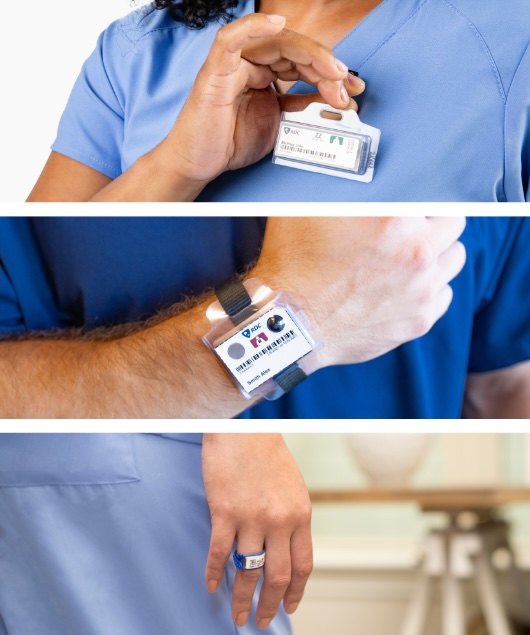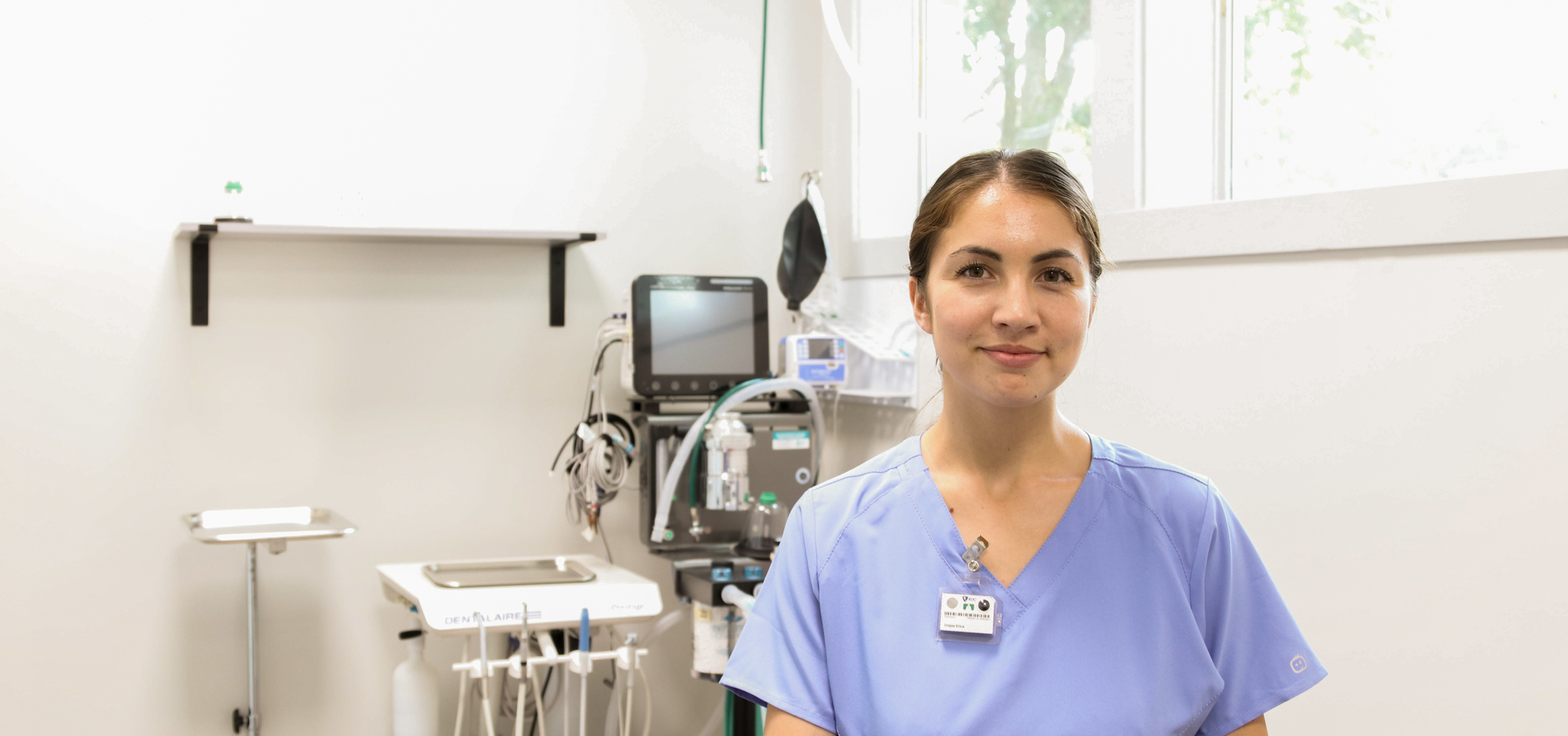
Summer Fade: How Heat Makes Dosimeters Forget Your Dose
Written by
Chris Passmore, CHP
President of Radiation Detection Company
Last Updated: August 26, 2025
Summer heat doesn’t just make you sweat – it can also cause your radiation dosimeter to “forget” your dose and increase the risk of thermal fade. Even on a "cooler" day, the sun can increase the heat in your car, compromising your dosimeter badge. For the thousands of workers who rely on accurate radiation monitoring, thermal fade is more than an inconvenience: it’s a safety and compliance risk that can throw a wrench in your radiation safety program.
Key Takeaways
- Heat can erase your dose: Many common dosimeter materials lose significant signal when exposed to high temperatures, especially if left in a hot car or similar environment.
- Dosimeter material matters: While detectors like CaF₂ or LiF:Mg,Ti and Al₂O₃:C can lose most of their recorded dose in extreme heat, BeO and LiF:Mg,Cu,P retain accuracy and provide more reliable results.
- Worker safety depends on accuracy: Inaccurate dose records can compromise compliance, misrepresent actual exposure, and put workers at unnecessary risk.
- Resilient materials safeguard programs: Selecting heat-resistant dosimeters, such as BeO (OSL) or LiF:Mg,Cu,P (TLD), helps ensure accurate, defensible dose data in real-world conditions.
The Risk of Thermal Fading
Radiation dosimeters measure and record exposure by trapping electrons inside detector materials. But when the temperature climbs past a certain point, those electrons can escape – a phenomenon known as thermal fading. When this happens, the dosimeter’s recorded dose can drop significantly, meaning the worker’s actual exposure isn’t reflected in the official dose record.
The culprit behind thermal fading is something called the anneal threshold – the temperature where trapped electrons start escaping from the detector material. Once this anneal threshold is crossed, the risk of inaccurate dose increases rapidly.
For radiation safety officers (RSOs), imaging directors, and healthcare leaders, understanding how different materials respond to heat is essential. If a dosimeter cannot reliably record dose under real-world conditions, it undermines the very foundation of radiation protection programs.
Why Heat Puts Dose Accuracy at Risk
Dosimetry programs are designed to ensure accurate, legally defensible dose records. But what happens when the environment itself interferes with the science?
- Threshold Limitations: Many common detectors have an anneal threshold around 122°F (50°C). Beyond this point, signal loss begins.
- Everyday Environments: A car parked in the sun can easily reach 160°F (71°C), especially in summer months. Workers often leave their dosimeters in cars between shifts, unknowingly putting their dose accuracy at risk.
- Extreme Conditions: In the most intense natural environments on Earth, ground temperatures as high as 201°F (94°C) have been recorded. To test for worst-case scenarios, researchers often simulate this temperature over a 24-hour period to assess how different detector materials perform.
- Mild Weather Still Poses a Risk: According to the National Weather Service, even on a 73ºF (22.8ºC) day, interior car temperatures can exceed 110ºF (43.3ºC) after an hour. Temperatures can skyrocket to almost double that on a car dashboard.
The results aren’t reassuring for many traditional dosimeters. In just one day at high heat, some detectors can lose most of their recorded signal. BeO dosimeters from Radiation Detection Company stand out for their superior stability, showing only about 2% signal loss under identical conditions.
Heat-Induced Signal Loss: A Material-by-Material Look
The list below shows how different detectors perform when subjected to 201°F (94°C) for 24 hours – simulating a hot car or extreme storage environment:
- CaF₂ –100% loss (literature)
- LiF:Mg,Ti – 80% loss (McKeever, Thermoluminescence of Solids, 1985)
- Al₂O₃:C – 67% loss (Akselrod et al., Radiation Protection Dosimetry, 1998)
- Li₂B₄O₇:Cu – 28% loss (Azorín et al., Radiation Protection Dosimetry, 1999)
- LiF:Mg,Cu,P – 22% loss (Yukihara et al., Radiation Measurements, 2004)
- CaSO₄:Tm – 13% loss (McKeever, Thermoluminescence of Solids, 1985)
- LiF:Mg,Ti (pre-anneal) – 10% loss (PNNL Technical Basis Document)
- BeO – 2% loss (C. Passmore, RDC Technical Report, 2023)
These results reveal just how wide the performance gap can be. Materials like CaF₂, LiF:Mg,Ti, and Al₂O₃:C fail dramatically under heat. Others, like Li₂B₄O₇:Cu, LiF:Mg,Cu,P, CaSO₄:Tm, and LiF:Mg,Ti retain much more of the dose, but still lose a measurable portion – enough to cause significant dose inaccuracies that put workers at risk.
Only BeO demonstrates exceptional stability, with just 2% loss under the same conditions.
Why BeO Stands Apart
Beryllium oxide’s unique properties make it a standout material for dosimetry:
- High Anneal Threshold: With an anneal threshold around 212°F (100°C), BeO resists thermal fading far better than most alternatives.
- Reliable in Real-World Use: Whether it’s a dosimeter left in a vehicle or carried into an environmentally hostile industrial environment, BeO maintains accuracy where other detectors degrade.
- Stable Performance: Even after prolonged heat exposure, BeO’s dose record remains trustworthy – giving workers and radiation safety officers confidence in the integrity of their data.
Material accuracy matters because dosimetry isn’t just a regulatory checkbox – it’s the official record of a worker’s lifetime exposure. If those numbers are artificially low because the dosimeter “forgot,” safety programs lose their credibility and workers could unknowingly exceed safe dose limits, putting their health at risk.
Implications for Radiation Safety Programs
For healthcare, dental, veterinary, and industrial organizations, the takeaway is clear: not all dosimeters are created equal. Detector material choice has real-world consequences for compliance, worker protection, and risk management.
Accuracy in Adverse Conditions
Organizations don’t always control where their dosimeters are stored, and sometimes, they can get lost in the shuffle, even by the most well-meaning employees. Whether they’re left in a locker, a car, or near a heat source, exposure to high temperatures is possible – and, for some workers, probable. BeO dosimeters (and well-defined storage procedures) help safeguard dose accuracy against these conditions.
Organizations can implement some best practices to minimize the risk of fade – like storing dosimeters on dosimeter storage boards. Creating a centralized storage solution will help prevent workers from leaving dosimeters in their car or losing them altogether.
Protecting Worker Health
Dose records aren’t just regulatory paperwork – they guide decisions about worker rotation and cumulative lifetime exposure. Inaccurate readings could lead to unsafe exposures going unnoticed and potential future health risks.
Defensible Compliance
In the event of an inspection or audit, regulators expect accurate and traceable dose data. While a parking lot sweep for dosimeters trapped in employee vehicles isn’t a standard part of an audit, the resulting inaccurate dose records could put organizations at risk of failing compliance checks.
From hospitals and diagnostic imaging centers to dental offices, veterinary clinics, manufacturing plants, and nuclear energy sites, workers depend on reliable monitoring. Detector choice directly influences whether programs can deliver trustworthy protection and adhere to strict compliance regulations.
How to Beat the Heat: Four Tips to Reduce Fade Risk
Here are four tips to help promote radiation safety by reducing the risk of fade:
- Educate Workers: Remind staff not to store dosimeters in cars or hot environments whenever possible.
- Select Better Materials: Choose detector technologies with proven heat resistance, like BeO (OSL) or LiF:Mg,Cu,P (TLD).
- Review Dosimetry Programs: Conduct regular evaluations of dosimeter performance under real-world conditions and ensure all workers complete regular radiation safety training.
- Prioritize Reliability: In an era where compliance, safety, and efficiency are under greater scrutiny, selecting robust detector materials is a straightforward way to strengthen program integrity.
Final Word: Heat-Proof Your Dose Accuracy
Summer heat serves as a reminder that dosimeter performance isn’t just about sensitivity to radiation – it’s also about conscientious awareness of your environment. Outside of summer, thermal fade still poses a risk, especially in areas with year-round high temperatures.
The science is clear: some detector materials lose their memory in the heat, while others, like BeO, continue to safeguard dose accuracy.
At RDC, we’ve built our dosimetry programs around materials that stand up to the real world, not just the laboratory. By leveraging heat-resistant dosimeter materials like BeO OSL and LiF:Mg,Cu,P TLD, we provide reliable monitoring that workers and RSOs can trust.
Because when it comes to radiation safety, accuracy isn’t optional – it’s the foundation of protection.
Frequently Asked Questions (FAQ)
What is thermal fading in dosimeters?
Thermal fading occurs when heat causes trapped electrons in the dosimeter’s detector material to escape prematurely. This results in a lower recorded dose than the worker actually received, reducing dose report accuracy.
How hot does it have to be for a dosimeter to lose accuracy?
It depends on the detector material. Many common dosimeters begin to lose accuracy around 122°F (50°C). Everyday environments like a parked car in summer can easily exceed 160°F (71°C), putting dose records at risk.
Which dosimeter materials are most resistant to heat?
BeO and LiF:Mg,Cu,P are among the most heat-resistant materials used in dosimetry today. BeO, in particular, maintains accuracy even after 24 hours at 201°F (94°C), with only about 2% signal loss.
What can workers do to prevent heat-induced dose loss?
The best practice is to avoid leaving dosimeters in hot environments such as cars, lockers, or near heat sources. For organizations, choosing detectors made from heat-resistant materials like BeO and LiF:Mg,Cu,P is the most effective way to ensure dose accuracy under real-world conditions.




